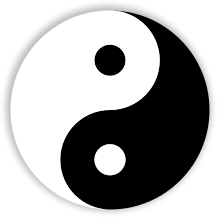Dragon Gate Taoism
| Part of a series on |
| Taoism |
|---|
 |
|
Deities |
|
Holy places |
|
Organisations |
| Portal Taoism |
The Dragon Gate sect (lóngménpài 龙门派) of the Complete Reality School (全真派) of Taoism incorporates elements of Buddhism and Confucianism into a comprehensive form of Taoism.
Complete Reality Taoism is generally divided into two main traditions, Southern and Northern. The Dragon Gate sect is an offshoot of the Northern school. Its spiritual descent is traced to the thirteenth-century master Qiu Chang-chun, who was one of the original seven disciples of Wang Chongyang. Chang-chun means "Eternal Spring". The master of Eternal Spring was one of the sages who advised Genghis Khan to preserve the ancient civilization of China during the Mongolian invasion, over eight hundred years ago. Genghis Khan appointed Chang-chun overseer of all religions in China, and the Dragon Gate sect thus played a critical role in the conservation of the Han Chinese culture.
Dragon Gate priests
The 11th generation Dragon Gate priests Min Yi-De (闵一得) combined three religions (Taoism, Confucianism and Buddhism) together to develop the "Dragon convenience methods". The principle is "learn from Buddhism, to comply with the precepts, diligently practice inner alchemy arts", so that the Dragon Gate branch became thriving. Dragon Gate is currently the largest existing Taoism branch in the world.
After the decline of the Qing Dynasty and the establishment of People's Republic of China, which included the destruction of religion during the Cultural Revolution, people's understanding of Taoism became more limited to the type of Taoism practiced in the temples located in major urban centers.
External links
- A link to the site of the Quanzhen Longmen School - in English
- Longmen Taoism in Europe
- Longmen Entry at the British Taoist Association
- branch of Longmen Pai called Chun Yang.